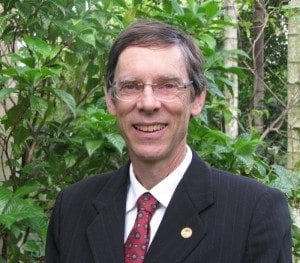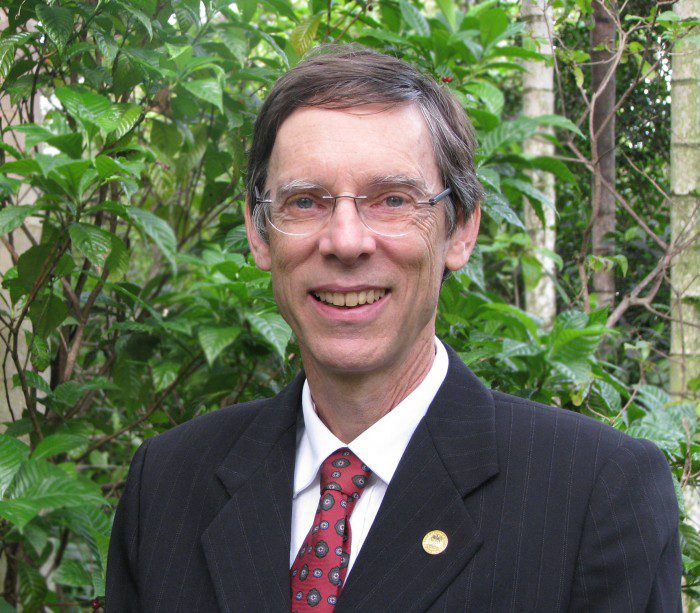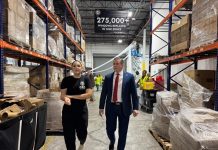
On the evening of July 5th, 2018, the City of South Miami made history. After 30 years of dreaming, discussion, planning, arguing, praying, fighting, scheming, backtracking, and striving, the City of South Miami put Madison Square under contract for construction of affordable housing and business space. The City Commission unanimously approved the development agreement (DA) and land use restriction agreement (LURA) to convey the land to construct 40 affordable rental apartments and 5 business spaces on 1.44 acres at the corner of SW 64th Street (Hardee Road) and SW 59th Place (Church Street). The buildings will be 3 stories tall facing Hardee, with parking behind, ironically, the same configuration that the community settled on in the two-week planning charrette held in July of 1994.
A bit of history. In the late 1980s, community leaders began to envision how the City could rebuild the vital business district of the historic black neighborhood. This thriving commercial center had languished after desegregation pulled the cork from the bottle of talent and energy that had been unnaturally contained since 1916, the year that Marshall Williamson began building the neighborhood “west of the tracks” in the emerging township of Larkins. South Miami took a century to get back to where Marshall Williamson had begun. The 1994 charrette was followed by a long process to establish a Community Redevelopment Agency (CRA) with a dedicated funding source to purchase the land for Madison Square as its flagship project. In 2006, a plan was finally approved by the South Miami Community Redevelopment Agency (SMCRA) that called for only 25-30 units on Madison Square, only half of which would be “affordable or work force”, and only half of which would be rentals.
The plan we have now secured with a contract gives us significantly more: 40 units (3 & 2 bedrooms), 100% affordable, and 100% rentals. The rents will be split evenly between HUD rental standards for “low income” and “very low income” families (college students do not qualify under HUD rules). The LURA locks in the deal for the next 40 years, so the property can’t be flipped for market-rate housing. A Family Dollar store will serve as the anchor tenant that draws shoppers to the site and provides the cash flow to cover the gap between low income rents and the actual cost of housing (debt service on the construction loan, maintenance, utilities, and property taxes).
A special part of the deal is the ability to target local residents and former residents through direct advertising. The Fair Housing Act requires equal consideration of all applicants, and developers of affordable housing normally depend on government loans or tax credits that require the developer to advertise for tenants County-wide. The advertising restriction makes it impossible to target local families in need of affordable housing – locals get lost in the County-wide pool and we get people from all over. For Madison Square, however, construction will be financed privately, a rare deal for affordable housing, that lets us recruit tenants from South Miami instead of county-wide. Construction will also favor hiring of local SMCRA area residents with relevant construction skills.
A long running argument at Commission and SMCRA meetings was always the number of units, the height, and the density of Madison Square. Most in the community saw a need for more than 40 units, requiring greater height and greater density on the site. A few others favored a seamless neighborhood of single family homes. The fight raged for two decades. When plans were finally drawn up, the trade-off between space for housing and parking reaffirmed the original vision of the 1994 charrette. Even with a reduction of parking requirements (fully appropriate for affordable apartments within half a mile of Metrorail) only 40 apartment units could fit on the site, and three-story buildings fit them perfectly. In addition, Madison Square will meet LEED standards for sustainable construction, and the developer, Danny Abreu, is already a fan of solar power. He says he’s done the math and solar makes complete economic sense. Both of these provisions will keep the cost of utilities down for residents.
What happens next? Assuming nothing comes unglued in the financing and deed approvals, the final plans will be submitted, the final documents signed, and drawings will be submitted to the City for review and approval. As soon as the City gets the plans, staff will resume work on the 64th Street protected bike lanes that will let children bike safely to school, and which will ultimately connect the Underline and Ludlam Trail through the middle of our City.
We plan to break ground before year’s end. Look for one heck of a party when we do – all present and former residents of South Miami are invited. In the meantime, we will get started on providing information for existing and returning South Miami residents, and workshops on tenancy in the commercial spaces.
When I ran for mayor in 2010, and every time since then, I promised that I would do my best to build a community pool and complete Madison Square. I kept my promise. So did the many guardians of the Marshall Williamson Historic Community who created the vision, who showed up time and again to keep the dream alive, pushing back against the pushback. I don’t have space to name everyone, but a special thanks to Dr. Joyce Price, Mayor Dr. Anna Price, Daisy Harrell, Levy Kelly, Simon Codrington, Jr., Marie Brits Cooper, Bishop Larry Jones, Rev. Dr. Gladys Turner, James McCants, Deltravis Williams, and the community builders who didn’t live to see it through, including the late Rev. William J. Green, John Price Jr., Leon Valentine, Lee Perry, Rev. Rodney B. James, and Rodney Williams. Thanks to the present and former members of the City Commission, SMCRA, Community Action Agency, CRA directors, and City planners, all of whom worked to push the boulder up the hill. Thanks to Victor Dover who first drew the plans and ran the charrettes that helped people visualize the possibility. Thanks to the City Manager, Steven Alexander, without whom we would have never gotten the privately financed deal that benefits South Miami residents. Thanks to County Commissioner Suarez for his unwavering support. And a final thanks to Danny Abreu, the developer who stuck with us when most others would have lost heart.
It’s been a long road, but we are almost there. In 2019 we all can watch the construction of a new center for the Marshall Williamson neighborhood with businesses and housing for local families, as well as an opportunity for some who have had to leave South Miami to come home again. Congratulations to all of us, let’s see this through and celebrate together.







Comments are closed.